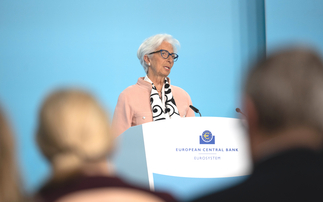PARTNER INSIGHT: Could this be the beginning of the end? This is the question we ask in our latest Cyclical Outlook, which summarizes the conclusions from PIMCO's quarterly Cyclical Forum held earlier this month.
Stormy weather was abundant in March: spring snowstorms in the Northeast of the U.S., a trade tussle with China that could escalate into a trade war, hawkish personnel changes in the White House, a Powell-led Federal Reserve that expects to overshoot the neutral policy rate, and the worst week for U.S. equities since January 2016.
Could this be the beginning of the end? This is the question we ask in our latest Cyclical Outlook, which summarizes the conclusions from PIMCO's quarterly Cyclical Forum held earlier this month. If you haven't read the outlook, you may wonder: "The beginning of the end of … what?" Here are three variations of the question, along with our answers.
The beginning of the end of … extreme monetary accommodation?
Yes, at least in the U.S. Consider what happened at the March Federal Open Market Committee (FOMC) meeting:
First, the Fed raised the target range for the federal funds rate to 1.5% to 1.75%, the sixth rate hike in this cycle. With core PCE inflation (the Fed's preferred measure) at 1.5%, this means the real policy rate is now no longer negative. If, like me, you believe that that the neutral real policy rate (r*) is currently around zero, the Fed's policy stance is no longer accommodative.
Second, the median FOMC participant now expects seven more rate hikes of 25 basis points to 3.4% by the end of 2020, adding two more hikes compared to the December 2017 dot plot, and taking the fed funds rate some 50 basis points above the Fed's own estimate of the long-run neutral policy rate in three years' time. So the Fed now officially expects to overshoot neutral. Let this sink in.
Third, recall that the Fed is running down its balance sheet at an accelerating pace this year, which is worth about one additional rate hike.
As I see it, the end of easy money in the U.S. implies that the days of suppressed volatility in financial markets are coming to an end. With the dampened blanket of excess liquidity finally being withdrawn, beware of what lies beneath…
The beginning of the end of … the economic expansion?
Probably yes. The lagged effect of favorable financial conditions and the coming fiscal stimulus in the U.S. should ensure that growth remains above trend this year. However, global growth momentum has started to ebb as evidenced by the recent rollover of business surveys in China, Europe and Japan, which confirms the "Peak Growth" thesis in our 2018 outlook. The cyclical oomph added by fiscal expansion this year and next year will likely sow the seeds for a downturn later, potentially leading to a recession in 2020.
By then, the fiscal stimulus will have faded and the Fed will, on its current plans, have raised rates above its estimate of the long-run neutral rate. Of course, Jerome Powell and colleagues hope to engineer a soft landing. However, in the 30+ years that I've been watching this, a fed funds rate above neutral has always resulted in a recession. Will this time be different? Don't bank on it. Therefore, we believe it is prudent to gradually position more cautiously and defensively in portfolios, as we discuss in the Cyclical Outlook.
The beginning of the end of … The New Neutral?
Probably not. This was a major debate at our latest forum: Are we witnessing the early stages of a supply-side productivity renaissance leading to higher trend growth, helped by lower marginal tax rates, deregulation and animal spirits? And if so, could this spell the end of The New Neutral of low equilibrium interest rates? After a thorough discussion, we concluded that we continue to see The New Neutral - that is, the expectation of a real neutral policy rate in the U.S. in the range of 0% to 1% - as an appropriate framework and an anchor for fixed income valuations. In this context, we think the recent rise in yields has largely priced in the late stage fiscal expansion and the associated U.S. Treasury supply shock.
While there remains some upside risk to global yields, and we expect to maintain duration underweight positions, we do not think that we are at the start of a secular bear market for bonds. However, we remain open to the possibility of a paradigm shift and will certainly debate the issue again at our next Secular Forum in May.
View our Cyclical Outlook, "The Beginning of the End?", for more information on these key questions, as well as growth forecasts and portfolio insights.
Important information
This article contains the current opinions of the manager and such opinions are subject to change without notice. This article has been distributed for informational purposes only and should not be considered as investment advice or a recommendation of any particular security, strategy or investment product. Information contained herein has been obtained from sources believed to be reliable, but not guaranteed. No part of this article may be reproduced in any form, or referred to in any other publication, without express written permission. PIMCO is a trademark or registered trademark of Allianz Asset Management of America L.P. in the United States and throughout the world. ©2018, PIMCO.
PIMCO Europe Ltd (Company No. 2604517) and PIMCO Europe Ltd - Italy (Company No. 07533910969) are authorised and regulated by the Financial Conduct Authority (25 The North Colonnade, Canary Wharf, London E14 5HS) in the UK. The Italy branch is additionally regulated by the Commissione Nazionale per le Società e la Borsa (CONSOB) in accordance with Article 27 of the Italian Consolidated Financial Act. PIMCO Europe Ltd services are available only to professional clients as defined in the Financial Conduct Authority's Handbook and are not available to individual investors, who should not rely on this communication.













